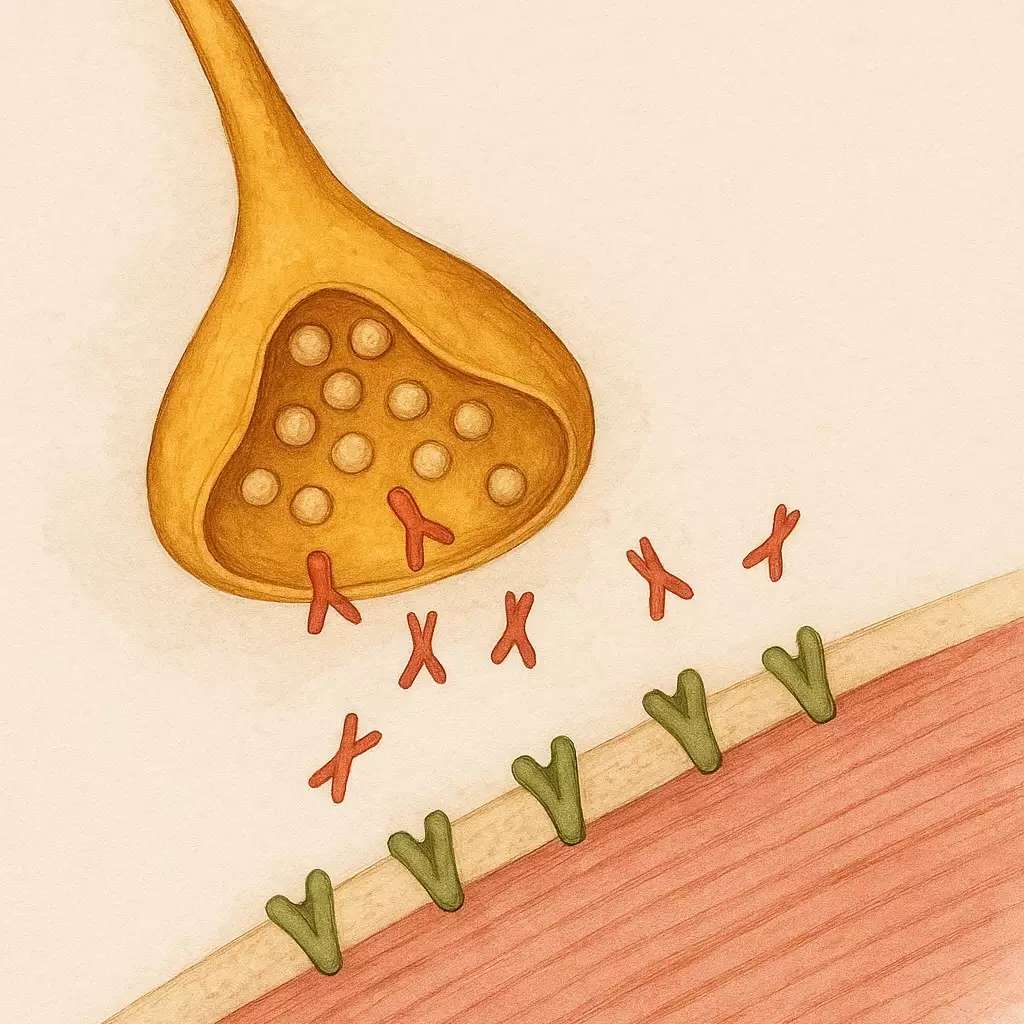Myasthenia Gravis
Myasthenia gravis is an autoimmune disease that affects the neuromuscular junction. It typically manifests as fluctuating muscle weakness. Due to its inconsistent and varied clinical features, the disease often presents a diagnostic challenge that can confront specialists from different fields. Early diagnosis and the right therapeutic approach are the basis for successful treatment, but we must also keep in mind the risk of a life-threatening myasthenic crisis. Find out which factors can contribute to the development of a myasthenic crisis (and much more) in this algorithm.
Review
The development of myasthenia gravis symptoms often begins acutely, ranging from mild ocular symptoms to severe difficulties with swallowing and breathing. All of these have been incorporated into the algorithm. In addition to the three typical symptom sets— in three patients in Neurology emergency room — the basic diagnostic approach is summarized.
The therapeutic approach is also covered quite broadly: basic medications, intensive care management, and certain high-risk drugs are all discussed. The explanations and comments provided alongside the correct answers are also helpful and add valuable supplementary information.
Sources
NARAYANASWAMI, P., SANDERS, DB., WOLFE, G., BENETAR, M., CEA, G., EVOLI, A., GILHUS, NE., ILLA, I., KUNTZ, NL., MASSEY, J., MELMS, A., MURAI, H., NICOLLE, M., PALACE, J., RICHMAN, D., VERSCHUUREN, J. International Consensus Guidance for Management of Myasthenia Gravis: 2020 Update. [online]. Neurology, 2021, vol. 96, iss. 3, p.114-122. doi: 10.1212/WNL.0000000000011124. Available from: https://www.neurology.org/doi/10.1212/WNL.0000000000011124#letters-section. [Accessed 4 April 2025].
PIŤHA, J. Myasthenia gravis. [online]. Med.praxi, 2015, vol. 12, iss. 3, p. 121–125. Available from: https://www.medicinapropraxi.cz/artkey/med-201503-0006_Myasthenia_gravis.php. [Accessed 4 May 2025].
RŮŽIČKA, Evžen. Neurologie. 2nd ed. Praha: Stanislav Juhaňák - Triton, 2021. ISBN 978-80-7553-908-3.
VOHÁŇKA, S. Farmakoterapie myasthenia gravis. [online]. Neurol. praxi, 2010, vol. 11, iss. 2, p. 95-99. Available from: https://www.solen.cz/artkey/neu-201002-0006_Farmakoterapie_myasthenia_gravis.php. [Accessed 4 May 2025].
Learning targets
2. The student knows the diagnostic procedures when myasthenia gravis is suspected.
3. The student understands the basic principles of myasthenia gravis treatment.
4. The student can identify and effectively manage an acute myasthenic crisis.
Key points
2. Myasthenia gravis is an autoimmune disease, and its treatment involves immunomodulatory drugs and cholinesterase inhibitors.
3. Myasthenic crisis is an acute condition characterized by severe muscle weakness, posing a significant risk due to fatigue of the respiratory muscles.





